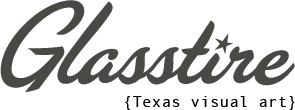The landmarked Paggi House at The Loren Hotel in Austin sets quite a unique stage for SUSSURRI, the hotel’s fourth art exhibition. Curated by art historian Ruth Noack, the show features works from Mary Ellen Carroll, Andy Coolquitt, and Phoebe Lickwar. This collection examines infrastructure within both the built environment and nature through painting, sculpture, and photography. The exhibition’s title, SUSSURRI, which translates as the Greek word “psythis,” is the sound of the wind blowing between the trees, a phenomenon that exists between noise and music, chaos and composure.
Penny Liebman Aaron, cultural advisor for Paggi House, describes the show as surprising and contemplative. “We hope visitors slow down and think about themselves and their surroundings,” she says. With its rich history and Greek Revival-style architecture, Paggi House acts as both a venue and storytelling collaborator, amplifying the themes within.
A Venue Steeped in History
Paggi House is one of Austin’s oldest buildings still in its original location, second only to The French Legation, which was constructed in 1841. Its contemporary transformation into a gallery space “is the perfect setting for this kind of exhibition,” Liebman Aaron says. “We’ve worked to honor its past while creating a space for contemporary art that invites reflection and dialogue.” The painted red brick house sits in the shadow of the statuesque Loren, its L-shaped volume hugging a once-open courtyard with a 19th century well and milk house. Glass now wraps the courtyard, which has created diverse vintage points all while protecting the historic structures it holds.
Weaving Communication
The three artists featured in SUSSURRI share a common interest in the relationship between human infrastructure and the natural world, though each approaches it through a distinct lens.
Mary Ellen Carroll, a New York-based conceptual artist, examines the adaptability of materials and their implications for sustainability. Known for her multidisciplinary practice that spans public policy, architecture, and technology, her work often challenges viewers to reconsider the structures that shape their lives. “Mary Ellen’s work evolves over time,” Liebman Aaron says. “Her use of materials like silver nitrate allows her paintings to change in response to the air and environment, making her pieces feel alive.” Free To Leave (2019), a painting placed at the home’s entrance, is inspired by the plight of unaccompanied immigrant children isolated at our southern border in 2018, treatment which violated their rights, and offers a continued dialogue on US immigration policy.
Austin-based artist Andy Coolquitt, meanwhile, transforms everyday objects into sculptures that explore utility, community, and art. His works, such as Ding Dong (2021), made from salvaged materials like metal tubing, electrical wire, socks, and bulbs, highlight the hidden beauty of infrastructure. His playful, resonant pieces remind us of systems we rely on but may overlook. Phoebe Lickwar is a landscape architect, photographer, and professor whose work offers a more tranquil yet equally powerful point of view, often focused on the preservation of heritage lands. In this gallery, her photographs document ancient Italian farming practices, such as coltura promiscua — a symbiotic approach to agriculture that promotes biodiversity. “Phoebe’s work connects us to the rhythms of the natural world,” Aaron notes. “She captures landscapes that carry centuries of cultural and ecological knowledge.”
Sound of Reflection
At the start of the exhibition, visitors can view a 1995 video of Cameroonian musicologist Francis Bebey, in which he demonstrates the n’dehou, a one-note bamboo flute. His melody is relaxing against the ambient sounds of the wind, birds, and trees, only interrupted by the roar of a passing train, showcasing how infrastructure can either harmonize or disrupt the natural world.
This speaks to the exhibition’s overarching questions: How does infrastructure shape our lives? Does it empower or disenfranchise? Does it impose limitations on creativity and connection? Sussurri offers a rare opportunity to sit with those questions.
“It’s not about providing easy answers,” Liebman Aaron explains. “It’s about encouraging visitors to think in new ways. Not everyone will, but for those who do, Sussurri is a different experience.”
Like the whispers of the wind, she hopes each piece challenges us to listen more closely to the world around us and the quiet that exists in between.
Sussurri was on view at the Paggi House at The Loren Hotel in Austin through Jan. 7.





